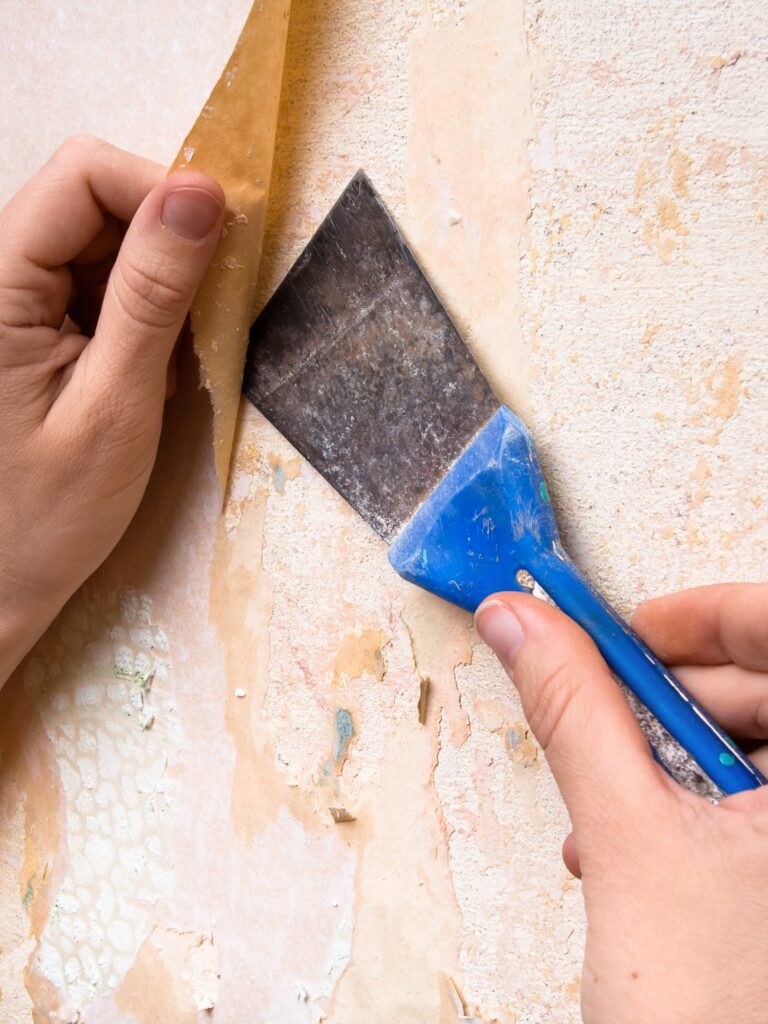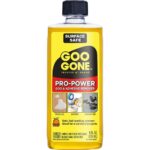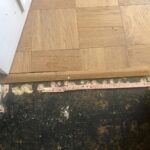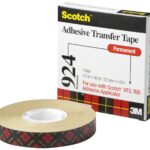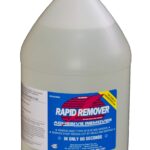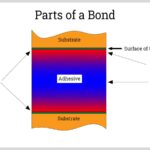Removing wallpaper glue can be a daunting task, but it is important to follow the right steps in order to successfully remove it. The first step is to lightly spray the area with a mixture of warm water and detergent. Let it soak in for a few minutes before using a sponge or cloth to rub the area. This will help to break down the glue and make the wallpaper easier to remove. Once most of the wallpaper has been removed, you can use a scraper or sandpaper to get rid of any stubborn pieces.
Make sure to be careful when using a scraper not to damage the wall. Once all the wallpaper has been removed, use a mixture of warm water and vinegar to clean the area. This will help to remove any residual glue. If there is still some glue remaining, you can use a solvent like acetone to dissolve it. Be sure to use rubber gloves and work in a well-ventilated area when using solvents. Finally, use a damp cloth to wipe down the wall to make sure all the glue is gone. Once you’re done, you can either repaint the wall or apply new wallpaper.
How to get wallpaper glue off textured walls

Removing wallpaper glue from textured walls can be a tricky process. Firstly, you need to use a putty knife or a plastic scraper to scrape off as much of the glue as possible. After that, you can mix warm water with a mild detergent and use a sponge to scrub the glue off the walls. If that isn’t enough, you may need to use something stronger like a commercial wallpaper remover. After the glue is off, you’ll need to rinse the walls with clean, warm water to remove any remaining residue. Finally, you’ll need to give the walls a good clean with a cloth and mild detergent to make sure all the glue is gone.
How do you remove glue residue from wallpaper?
Removing wallpaper glue residue can be a tricky and time-consuming task, but with the right tools and techniques it can be done. The first step is to identify the type of glue used on the wallpaper. Different types of wallpaper glue will require different methods of removal. If the glue residue is still wet, try using a damp cloth to soak up any excess glue. Then use a scraper or putty knife to gently scrape off the remaining residue.
Be careful not to damage the wallpaper surface. If the glue residue is already dry and hardened, you can use a chemical product specifically designed to remove wallpaper glue. Apply the product to the residue and let it sit for a few minutes before scraping off the glue with a putty knife or scraper. Finally, rinse the area with a cloth dampened with warm water to remove any remaining residue. Once the area is clean, you can apply fresh wallpaper. With a little patience and the right tools, you can successfully remove glue residue from wallpaper.
How to remove wallpaper glue in 5 simple steps?
Removing wallpaper glue from walls can seem like a daunting task, but it doesn’t have to be complicated. Here are five simple steps to help you get the job done quickly and easily. Step 1: Start by wetting the wallpaper glue with a sponge or cloth. This will soften the glue, making it easier to remove. Step 2: Use a scraper to gently remove the wallpaper glue.
Work in small sections and go slowly to avoid damaging the wall. Step 3: Once you’ve scraped off the glue, use a damp cloth to clean off any remaining residue. Step 4: Use a wallpaper remover solution to help break down the glue. You can find these solutions in most home improvement stores. Step 5: Once the glue is completely removed, use a mild detergent and warm water to wipe down the walls and remove any remaining residue. Following these five steps will ensure that you have removed all of the wallpaper glue from your walls and your walls will look as good as new.
How do you get wallpaper off the wall?
Removing wallpaper can be a time consuming process, but it is not as difficult as it may seem. To get started, you will need to prepare the area by removing any furniture and other items from the wall. Then, use a scoring tool to puncture the wallpaper in several places. This will help to weaken the glue, making it easier to remove. Next, you will need to use a stripping solution to saturate the wallpaper.
You can purchase specialized wallpaper removal solution, or you can make a homemade solution by mixing warm water, fabric softener and detergent. Once the wallpaper has been saturated, you can start gently peeling it off the wall. If it does not come off easily, you can use a putty knife to gently scrape it away from the wall. Finally, once the wallpaper has been removed, use a damp cloth to remove any glue residue that may remain. Then, you can start to paint or hang new wallpaper on the wall.
How to Prime over wallpaper glue?
Removing wallpaper glue can be a difficult task, but priming over it can make the process much easier. The first step is to make sure the wallpaper glue is dry and not wet, otherwise the priming agent will not properly adhere. Once the glue is dry, you can start by cleaning the wall to remove any dirt or dust that may have accumulated on the surface. Next, you will need to apply a primer to the glue and the wall. Make sure you use an oil-based primer that is specifically designed for wallpaper glue.
Once the primer has been applied, allow it to dry completely before applying a fresh coat of paint. This will ensure that the paint will adhere properly to the wall. Finally, you can start painting the wall. If necessary, add a second coat of paint to make sure the wall is completely covered. With a few simple steps, you can easily prime over wallpaper glue.
What removes wallpaper glue
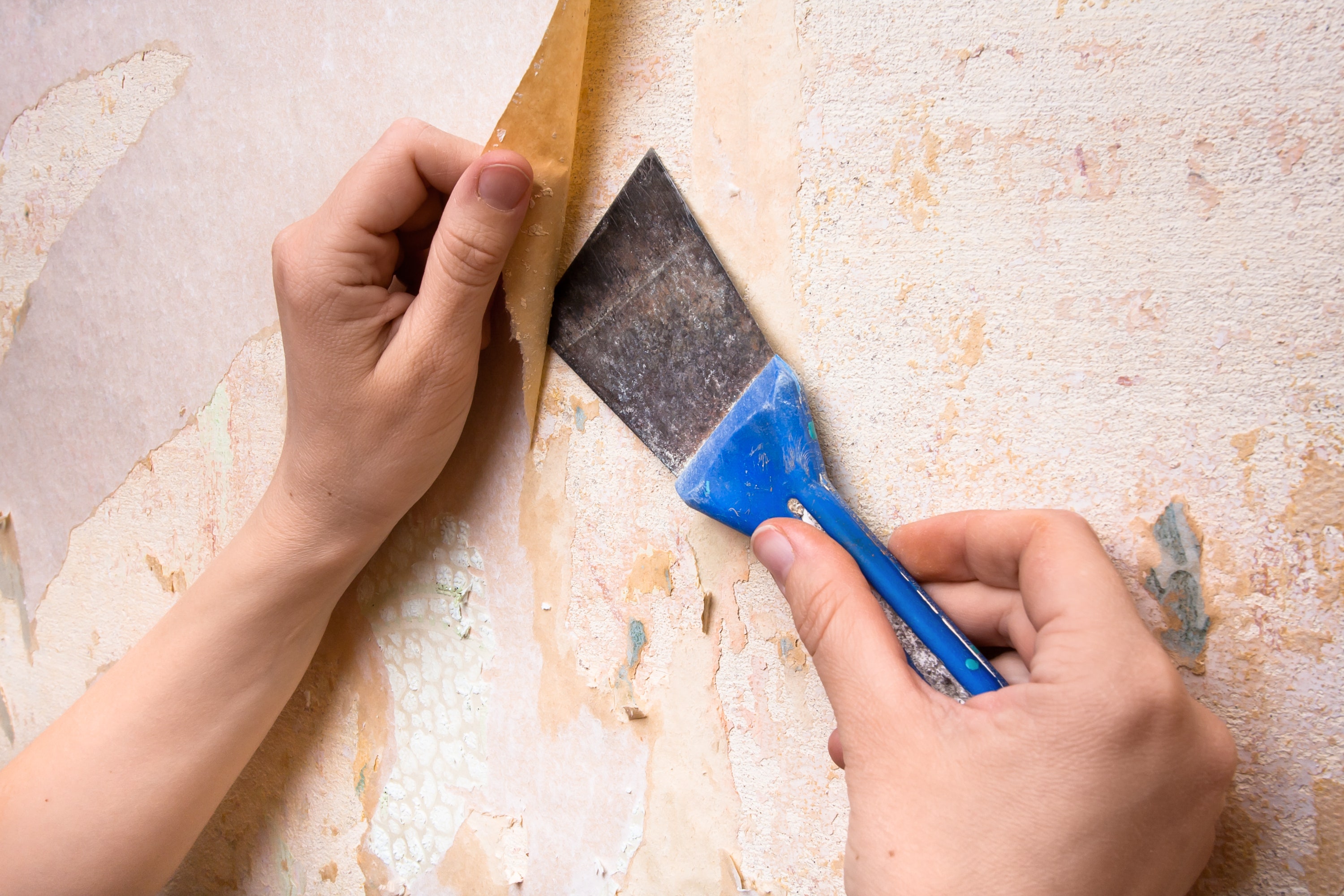
Removing wallpaper glue can be a difficult task, but it isn’t impossible. The best way to remove wallpaper glue is by using a wallpaper steamer. These steamers are designed to heat up the glue, making it easier to scrape off. Alternatively, you can use a chemical-based solution to help break down the glue. These solutions are generally made of a combination of warm water and fabric softener or a mixture of warm water and vinegar.
If you don’t have a steamer or a chemical solution, you can still try to scrape the glue off with a putty knife or a paint scraper. Be sure to use gentle pressure, as too much force can cause damage to your walls. Another option is to use a hot air gun or hair dryer. This will loosen up the adhesive, making it easier to scrape off. Keep in mind that heat guns and hair dryers can damage painted surfaces, so use with caution. When removing the glue from the wall, it is important to use a damp cloth to wipe away any remaining residue. This will make the wall surface easier to paint or wallpaper over. With the right tools and techniques, you can easily remove glue from your walls.
What is the best way to get wallpaper glue off?
Removing wallpaper glue can be a tricky task, but with the right tools and techniques, it is possible. The first step is to use hot water to soften the glue. You can either use a spray bottle to spray the hot water on the wall or soak a cloth in hot water and apply it to the wall. This should help break up the glue. Next, use a putty knife to scrape away the softened glue.
Make sure to be careful to not damage the wall. If you are still finding it hard to remove the glue, you can try using a wallpaper steamer. This will help to loosen the glue even further. Finally, use a damp cloth and some detergent to clean the wall and remove any remaining traces of glue. Make sure to rinse the wall afterwards. Overall, with the right tools and technique, you can get wallpaper glue off walls easily.
Does vinegar remove glue residue?
Removing wallpaper glue can be a difficult task, but using vinegar can help. Vinegar is a natural and effective way to remove glue residue from your wall. It is important to mix vinegar with water, in a ratio of 1 part vinegar to 1 part water. Begin by dabbing the mixture onto the sticky areas with a soft cloth. After a few minutes, use a scraper to gently scrape away the softened residue.
If there are any remaining glue residues, pour the vinegar mixture into a spray bottle and spray it directly onto the wall. Allow it to sit for a few minutes, then wipe it away with a damp cloth. With a bit of effort, you can get rid of glue residue with vinegar.
What liquid removes wallpaper?
Removing wallpaper glue can be a tricky task, but there are a few solutions that can make it easier. One of the best liquid solutions is warm water. Simply mix warm water with a mild detergent and use a sponge to gently scrub the glue off the surface. You may need to use a scraper to scrape away any large chunks. Another liquid solution is vinegar.
Mix equal parts of vinegar and warm water and use a sponge to scrub the glue away. This solution is especially effective for wallpaper that has been up for a long time. You can also use a commercial wallpaper remover. This is a liquid solution that can be purchased at most hardware or home improvement stores. It is designed to dissolve the glue and is often used with a wallpaper steamer. Finally, if all else fails, you can use paint stripper. This is a caustic liquid that must be used with caution. Make sure to wear protective gear and avoid using it on delicate surfaces. Whatever liquid you choose, it is important to test it in an inconspicuous area first to make sure it won’t damage your walls. With the right liquid, removing wallpaper glue should be a breeze.
How do you remove wallpaper glue?
Removing wallpaper glue can be a tedious task, but there are a few steps you can take to make the process a bit easier. Start by using a wallpaper steamer to heat the glue and loosen it from the wall. If you don’t have access to a wallpaper steamer, you can also use a hair dryer or a heat gun to heat the glue. Once the glue has been softened, you can use a putty knife to gently scrape off the glue. It’s important to be careful when using the putty knife as not to damage the wall.
If necessary, you can also use a solution of warm water and a mild detergent to help soften the glue. Once the solution is applied, leave it to soak into the glue before scraping it off. Finally, use a sponge and warm water to thoroughly clean the wall. This will remove any remaining pieces of glue and ensure a smooth surface. By following these steps, your wallpaper glue should be successfully removed. It may take a bit of time and effort, but it’s well worth it to get the job done right.
How can I texture walls after removing wallpaper?
Removing wallpaper glue can be a tricky and time-consuming task. Before you embark on this project, make sure you have the right tools and materials to make the job as easy as possible. Begin by testing a small area of the wallpaper to make sure it is ready to be removed. If the wallpaper is starting to come off easily, you can begin to remove the glue from the wall. To do this, use a putty knife to scrape away any residual glue on the wall.
Alternatively, you can try using warm water and a sponge to loosen the glue. Be sure to use gentle pressure to avoid damaging the walls. Once the wallpaper glue has been completely removed, you can begin to texture the walls. You can use a variety of tools, such as a brush, roller, or trowel, to create different textured effects. Experiment with different tools to achieve the desired look. For an added layer of protection, you can also use a sealant to further protect the walls from future damage. With the right tools and techniques, you can successfully texture walls after removing wallpaper glue.
How to get wallpaper glue off drywall
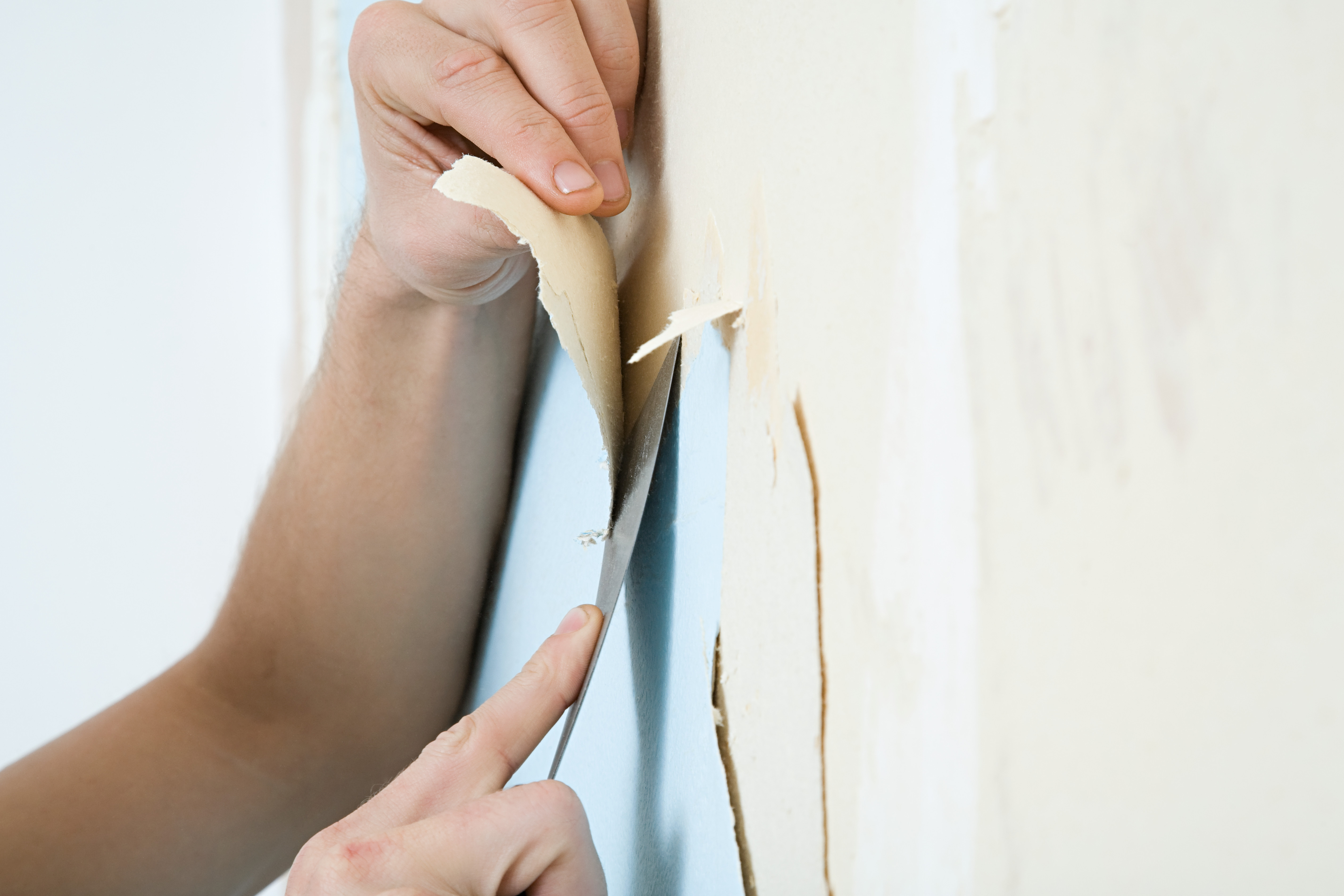
Removing wallpaper glue from drywall can be tricky, but it doesn’t have to be a daunting task. The first step is to dampen the wallpaper glue with a wet sponge or a damp cloth. This will soften the glue, making it easier to remove. Once the wallpaper glue is dampened, use a putty knife or scraper to gently scrape away the glue from the wall. To prevent any surface damage, make sure you use a soft-grit sandpaper and a plastic scraper.
Next, mix a solution of warm water and a mild detergent and use it to rinse away any remaining glue. Be sure to use a soft cloth to wipe the area clean. Finally, apply a sealant to the drywall to protect it from further damage. If you find that the glue has left a residue, you can use a damp sponge to wipe the area clean. With these easy steps, you can get wallpaper glue off drywall with ease. Keep in mind that patience and persistence are key when removing wallpaper glue from drywall.
Does vinegar dissolve wallpaper glue?
Removing wallpaper glue can be a daunting task, but vinegar can be a great help. Vinegar is known for its ability to dissolve tough substances. It is a natural, cost-effective and environmental-friendly way to remove wallpaper glue. To use vinegar as a wallpaper glue remover, you need to mix equal parts of white vinegar and warm water in a spray bottle. Spray this solution onto the wall, and wait for a few minutes for the vinegar to begin to dissolve the wallpaper glue.
Once the glue has softened, you can use a putty knife to gently scrape off the glue. However, it is important to note that vinegar may not be effective in all cases. If the glue is too old or too thick, you may need to rely on stronger solutions. This includes chemical wallpaper glue removers, which can be found in most hardware stores. Overall, vinegar can be a great tool to remove wallpaper glue. It is easy to use, inexpensive, and doesn’t require special equipment. But if it doesn’t work, you may need to use a more powerful solution.
Will Goo Gone remove wallpaper glue?
Removing wallpaper glue can be a tricky task. Many people are not sure what the best method is for removing wallpaper glue. One of the most popular products on the market for removing wallpaper glue is Goo Gone. Goo Gone is a powerful cleaner that is made up of citrus extracts and other solvents. It is designed to remove sticky, gummy, and gooey messes.
Goo Gone is not just for removing wallpaper glue, it can be used to clean up a variety of sticky messes. When using Goo Gone to remove wallpaper glue, it is important to read all of the instructions on the back of the bottle. You should also test the product on a small area of the wall before you apply it to the entire wall. This will ensure that the product does not damage the wall. Once you have applied Goo Gone to the wall, it is important to allow the product to sit for a few minutes. This allows the product to penetrate the wallpaper glue and dissolve it. After a few minutes, you can use a damp cloth or sponge to gently scrub the glue away. Goo Gone is a great product for removing wallpaper glue. It is easy to use and is designed specifically for removing sticky messes. With proper use, Goo Gone can help you remove stubborn wallpaper glue quickly and easily.
How do you clean walls after removing wallpaper before painting?
Removing wallpaper and preparing walls for painting can be a tedious task. The key to a successful paint job is to ensure that all traces of the wallpaper adhesive are removed before painting. To begin, it is important to remove as much of the wallpaper as possible. Begin by loosening the edges of the wallpaper with a putty knife and peel off the wallpaper. You may need to use a wallpaper removal solution or spray it with a garden hose to help with the removal process.
Once all the wallpaper has been removed, use a damp cloth to wipe down the walls to remove any dust and dirt. If there are any stubborn glue residue spots, you can use a wallpaper adhesive remover to help lift the glue away. When you’re finished cleaning the walls, allow them to dry completely before priming and painting. Use a primer if the walls have any stains or marks that will not come off with a damp cloth. This will help ensure a smooth finish when painting. Finally, inspect the walls for any remaining glue residue. If there is any, use a damp cloth to wipe it off and allow the walls to dry before continuing with the painting process. By taking the time to thoroughly clean the walls after removing the wallpaper, you can ensure a successful painting job.
Can you sand wallpaper glue off drywall?
Removing wallpaper glue from drywall can be a tricky job. There are a few different methods for taking it off, including sanding. Sanding wallpaper glue off of drywall should be done with caution. The sandpaper should be coarse enough to remove the glue without damaging the drywall. A good starting point is 120-grit sandpaper.
It is important to keep the sandpaper moving while sanding, as it can create grooves in the drywall if left in one spot for too long. Once all of the wallpaper glue is removed, it is a good idea to give the area a light sanding with a finer grit sandpaper, such as 220-grit, to smooth out any remaining bumps. When sanding wallpaper glue off of drywall, it is recommended to wear a dust mask, eye protection, and gloves in order to protect yourself from dust and any particles that are released from the sanding process.
What happens if you paint over wallpaper glue residue?
Removing wallpaper glue can be tricky, but it is essential to get rid of any residue before attempting to repaint. If you paint over wallpaper glue residue, then the paint is likely to stick to the underlying glue instead of the wall. This will result in an uneven and bumpy surface that is not only unappealing but can lead to further damage to the wall. The best way to remove wallpaper glue is to use a wallpaper steamer or a solvent-based remover. This will help to break down the glue and make it easier to scrape away.
If you are unable to access a steamer or remover, then you can try using a mixture of warm water and detergent to loosen the glue. It is important to remember that once you have removed the glue, you must ensure that the wall is dry before attempting to repaint. If you paint over wallpaper glue residue without properly removing it, then the paint will not adhere correctly and could peel off in the future. To ensure that you get the best results, it is essential to remove all of the wallpaper glue residue before attempting to repaint. If done correctly, this will provide a smooth and even surface that will look great and last for years to come.
What can I use to take wallpaper glue off?
Removing wallpaper glue can be a difficult and time-consuming task. To make the job easier, there are some common household items you can use to help get it off. One of the most effective things you can use is warm water. Soak a cloth in warm water and then use it to gently rub the area where the glue is located. This should help to loosen it up, making it easier to remove.
You can also use a mixture of washing up liquid and warm water to help break down the glue. Apply this directly to the area and use a cloth to gently scrub the glue away. If the glue is really stubborn, you may need to use a stronger solution. White spirit is an effective solvent for removing wallpaper glue and can be applied directly to the area. For more stubborn stains, you can use an adhesive remover. These are specifically designed to remove glue and can be found in hardware stores. They may require a bit more elbow grease to get the job done, but they should provide a more thorough result.
How to get mold off wallpaper?
Removing wallpaper glue can be a difficult task. Before attempting to remove the glue, you must first get any mold off the wallpaper. Mold can form on wallpaper due to excess moisture, and it can cause health issues if not taken care of. To get rid of mold, mix one cup of bleach with one gallon of water. Dip a sponge into the solution and scrub the affected areas of the wallpaper.
Be sure to wear gloves and a face mask when doing this to protect yourself from the bleach. After scrubbing, rinse the wallpaper with water and let it dry. If the mold persists after this treatment, try scrubbing the wallpaper with a sponge and a solution of hot water and white vinegar. White vinegar has antifungal and antimicrobial properties, making it an effective mold remover. Just like before, be sure to wear gloves and a face mask when you do this. Once the mold is gone, you can start to remove the wallpaper glue. To do this, use a putty knife to scrape the glue away from the wall and then use a wallpaper remover solution to soften the remaining glue. After that, use a sponge to wipe away the softened glue. If you follow these steps, you can remove the wallpaper glue and get rid of any mold that may have grown on the wallpaper. Taking these precautions will help to keep your home clean and healthy.
How to clean walls after removing wallpaper?
First, use a scraper or steamer to remove the wallpaper and any leftover glue. Once the wallpaper has been removed, you can start the process of cleaning the walls. To clean the walls, you can start by vacuuming and wiping down the walls with a damp cloth to remove any excess glue and dirt. Be sure to use a gentle, soapy solution to avoid any damage to the walls. You should then use a sponge or scrub brush and soapy water to scrub away the remaining glue.
Make sure to only use gentle pressure to avoid damaging the walls. After the glue has been removed, you can rinse the walls with a clean cloth. Once the walls are rinsed and dried, you may need to apply a wall sealer or a primer to ensure that all of the adhesive is gone and the walls are ready for painting or wallpapering. Remember, when removing wallpaper glue, safety is the most important factor. Wear protective clothing and safety glasses, and make sure to use safe cleaning products and techniques. If you follow these steps carefully, you should be able to successfully clean your walls after removing wallpaper glue.
What gets wallpaper glue off walls
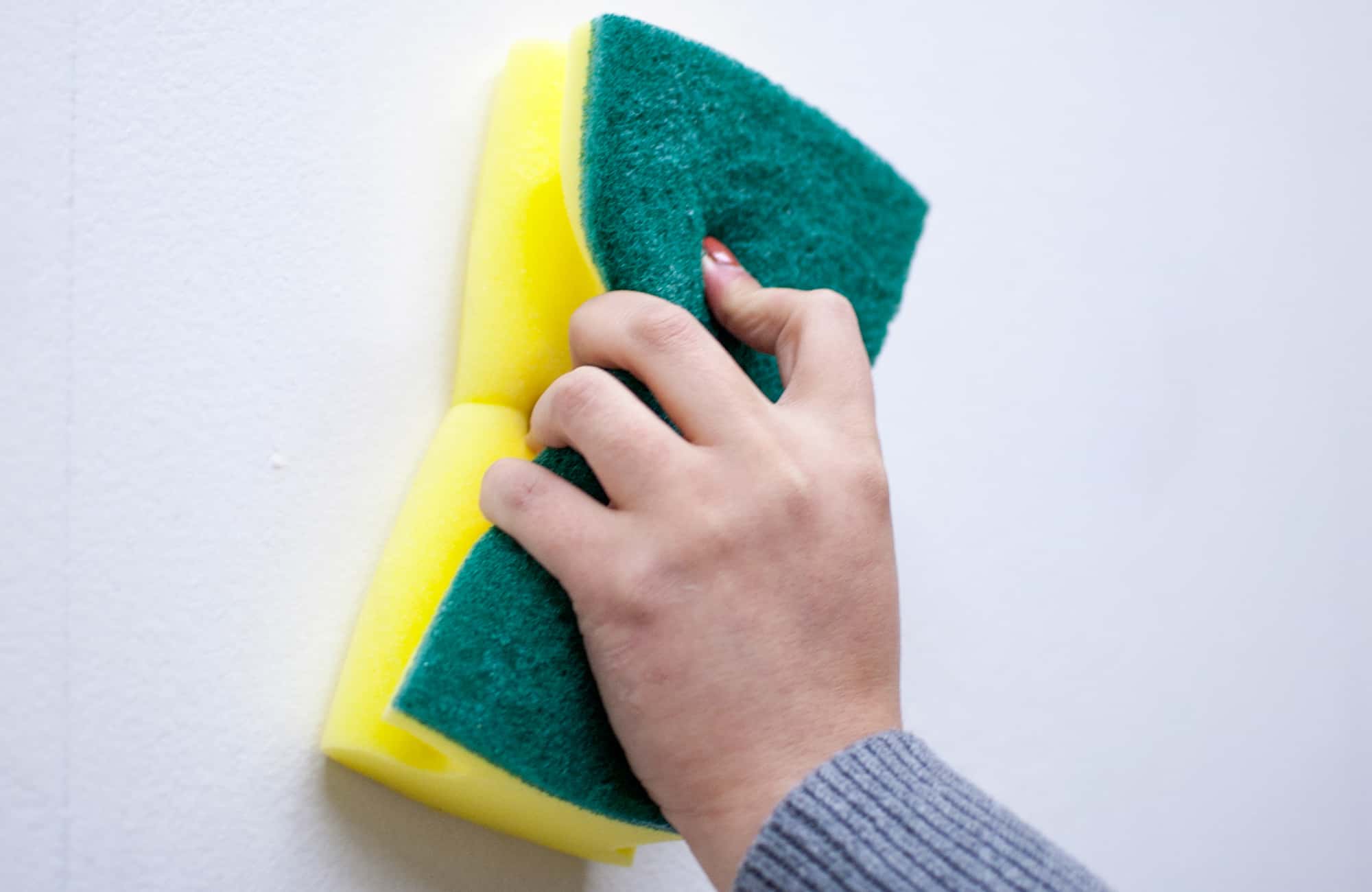
Removing wallpaper glue can be a tricky task. Fortunately, there are some easy ways to get it off your walls. The first step is to use a putty knife to scrape off as much of the glue as possible. Be sure to go slowly and carefully to avoid scratching the wall. After that, mix some warm water with a mild dish soap and dampen a sponge with the mixture.
Gently scrub the remaining glue with the sponge to loosen it. If the glue still won’t come off, you can also try using a mixture of equal parts white vinegar and warm water. Pour the mixture into a spray bottle and spray it onto the glue. Let it sit for 10 minutes or so and then use a sponge to wipe it away. If all else fails, you can purchase a wallpaper remover solution from a hardware store or home improvement center. Simply follow the instructions on the bottle for best results. No matter which method you choose, be sure to wear safety goggles and protective gloves to protect yourself from any harsh chemicals. With the right tools and a bit of patience, you can get wallpaper glue off from walls with ease.
What is the best thing to use to remove wallpaper glue?
Removing wallpaper glue can be an intimidating task, but don’t worry – it can be done! Depending on the type of wallpaper glue, there are a few different methods you can use to get the job done. The best thing to use to remove wallpaper glue is a mixture of warm water, fabric softener, and a few drops of dish soap. Start by diluting the fabric softener in the warm water, then add a couple of drops of the dish soap. Next, apply the mixture to the wallpaper glue and let it sit for about 10 minutes. After that, you should be able to scrape the glue off with a putty knife or a scraper.
If this method doesn’t work, you can try using a steamer. Fill a steamer with water, turn it on, and direct the steam onto the wallpaper glue until it becomes soft. Once soft, use a putty knife or a scraper to remove the glue. If all else fails, you can use a commercial wallpaper stripper. Make sure to follow the directions on the label and wear protective clothing and gloves when using this product. In the end, removing wallpaper glue can take some time and effort, but it doesn’t have to be a difficult task. With the right tools and supplies, you’ll have the wallpaper glue removed in no time.
Does Windex remove wallpaper glue?
Removing wallpaper glue can often be a difficult task, but there are several products that can help you do so. One such product is Windex. Windex is a multi-purpose cleaner, which can often be used to remove sticky residue from surfaces. This makes it a great option for removing wallpaper glue. To use Windex to remove wallpaper glue, spray some Windex directly onto the glue and let it sit for a few minutes.
This will help to loosen the glue. After a few minutes, use a cloth or sponge to wipe away the glue. You may need to repeat the process several times until the glue has been completely removed. Windex is an effective way to remove wallpaper glue, but it’s important to remember to use it carefully. Use it in a well-ventilated area, and wear gloves to protect your skin. Also, take care not to get the Windex on any other surfaces as it can cause damage. Overall, Windex is a great product for removing wallpaper glue. It is easy to use and can often get the job done with just a few sprays and wipes.
How to remove wallpaper glue from the walls?
Removing wallpaper glue from the walls can seem like a daunting task. However, with the right tools and techniques, you can quickly and easily remove the glue and restore the walls to their former glory. The first step is to soften the glue by using a steamer or a wallpaper scoring tool. Once the glue is softened, it should be possible to scrape it off the wall using a putty knife or a scraper. After the majority of the glue has been removed, any remaining residue can be taken care of using a cloth and a cleaning solution.
If a chemical cleaner is used, make sure to wear protective gloves and open a window for ventilation. If stubborn residue remains, try applying a mixture of hot water and fabric softener or vinegar and water to the wall. This will help to soften any remaining glue and make it easier to remove. Once all the glue has been removed, you can use a damp cloth to wipe away any remaining residue. Finally, make sure to use a primer before painting or adding new wallpaper. With these simple steps, you can easily and quickly remove wallpaper glue from the walls.
How to get ink off wallpaper?
To start, you need to create a mix of warm water and a mild detergent. Use a sponge to apply the mixture directly to the glue. Allow the mixture to sit for up to five minutes before beginning to scrape the glue from the wallpaper. Once you have scraped off as much glue as possible, use a damp cloth to wipe away any residue. Be sure to only use a damp cloth and not a wet one, as this may cause the ink to spread.
Next, you need to apply a wallpaper removal solution directly to the ink stain. There are many products available on the market that are specifically designed to remove ink stains. You may also use a mixture of equal parts white vinegar and warm water. Allow the solution to sit for up to five minutes before wiping away with a clean cloth. You may need to repeat several times before the ink is fully removed. If the ink is still not gone after several attempts, you may need to consider hiring a professional to help you. Keep in mind that it is possible to get ink off wallpaper, but it is a time-consuming process. Removing the glue is the first step and it is important to follow instructions carefully to ensure the best results.
What takes wallpaper glue off walls
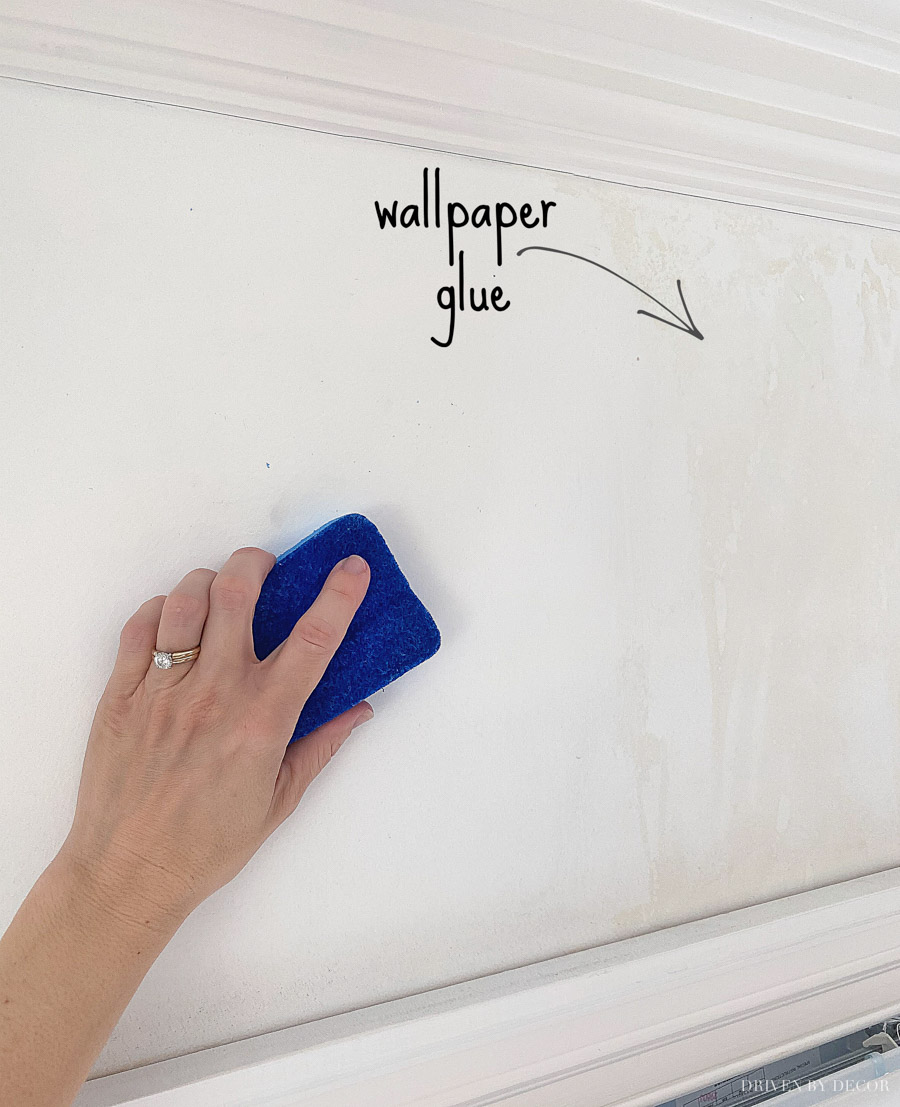
Removing wallpaper glue from a wall can be a challenging task. The best way to start is by using a putty knife to scrape away any loose pieces. If there is any residue left, you can use a damp cloth to gently scrub the area. You may also need to use a little elbow grease. If the residue is still present after scrubbing, you can use a mixture of warm water and mild detergent to help loosen it up.
Be sure to use a soft cloth to avoid scratching the walls. You may also need to use a mixture of vinegar and warm water. This solution can help to dissolve stubborn wallpaper glue. Apply the mixture to the wall with a sponge and let it sit for a few minutes. Then, use a damp cloth to wipe away the residue. For tougher wallpaper glue, you may need to use a chemical solution. Specialized wallpaper removal solutions are available at most hardware stores. Be sure to read the directions carefully before applying the solution to the wall. Once you have removed the wallpaper glue from the wall, you should rinse the area with clean water to ensure that all of the residue is gone. This will help to ensure that your wall is ready to be painted or wallpapered.
Will rubbing alcohol remove wallpaper glue?
Removing wallpaper glue can be a tricky task. If you’re looking for an effective and easy solution, then consider using rubbing alcohol. Rubbing alcohol is known to be an effective solvent, helping to loosen and remove wallpaper glue. It is also known to be safe to use on walls and it won’t damage the paint or wallpaper underneath. To use rubbing alcohol to remove wallpaper glue, first make sure the area is well-ventilated as the fumes can be hazardous.
Then, pour some of the rubbing alcohol into a spray bottle and spray it onto the glue. Wait a few minutes for it to soak in and then gently scrape off any remaining glue with a razor blade or putty knife. After you have scraped off the glue, you may need to wash the wall with warm soapy water to remove any leftover residue. Once the wall is dry, you can then start to prepare it for a new coat of paint or wallpaper. In conclusion, rubbing alcohol is an effective and safe solution for removing wallpaper glue. It is easy to use and won’t damage the wall, making it an ideal choice for removing wallpaper glue.
What is the best homemade wallpaper remover?
Removing wallpaper glue can be a daunting task. One of the best homemade wallpaper remover solutions is a mixture of hot water, vinegar, and dish soap. Start by heating up a pot of water and adding a cup of vinegar and a few drops of dish soap to it. Then, apply the solution to sections of the wall using a paint roller or spray bottle. Allow the solution to sit for several minutes and then use a putty knife or scraper to peel away the wallpaper and glue.
For stubborn glue, you may need to apply the solution multiple times and use a lot of elbow grease to remove it. You can also purchase a commercial wallpaper glue remover from a hardware store, but the homemade solution is usually much less expensive. Once the wallpaper has been removed, take the time to clean the walls thoroughly. Use a sponge and warm, soapy water to remove any remaining residue. You can also use a sponge and vinegar solution if you need to remove any stubborn glue. Then, rinse the walls and let them dry completely before applying a new wallcovering. Overall, the best homemade wallpaper remover is a mixture of hot water, vinegar, and dish soap. Make sure to apply the solution multiple times to remove stubborn glue, and take the necessary steps to clean the walls once the wallpaper has been removed. With the right combination of products and elbow grease, you’ll have your walls looking brand new in no time.
Is it hard to remove wallpaper glue?
Removing wallpaper glue can be a difficult job. Depending on the type of glue used and the amount of time it has been on the wall, this process can take anywhere from a few hours to a few days. If you are trying to remove wallpaper glue from drywall, the best way is to use a wallpaper steam stripper. This tool uses steam to loosen the glue, making it easier to pull off the wallpaper. However, you will also need to use a putty knife or scoring tool to scrape away any excess glue.
If the glue has been on the wall for a long time, you may need to apply a wallpaper remover solution to help break down the adhesive. This solution can be applied with a spray bottle or a roller. Once the solution has been applied and allowed to sit for about 20 minutes, you can use a putty knife or scraper to remove the glue. You may also want to try warm water and soap to remove wallpaper glue. Simply mix warm water and mild dish soap and apply it to the wall with a sponge. Gently rub the sponge over the glue and use a putty knife or scraper to remove any residue. Overall, removing wallpaper glue can be a difficult task, but with the right tools and products, you can get the job done with relative ease.
What removes wallpaper glue from walls

Removing wallpaper glue from walls can be a tricky task. Fortunately, there are several methods that can help you get the job done. One of the most effective ways is to use a wallpaper steamer. This tool applies steam to the wallpaper glue to help break it down, making it easier to scrape off. You can also try a mixture of water and vinegar.
Simply mix half a cup of white vinegar and a gallon of warm water. Use a sponge to apply the mixture to the wall, allow it to sit for a few minutes, and then use a putty knife to scrape off the glue. Another option is to use commercial wallpaper glue remover. This product is designed specifically to remove wallpaper glue, so it is usually the most effective method. Finally, you can use a combination of heat and scraping. Use a hair dryer to heat up the wallpaper glue, and then scrape it off with a putty knife. No matter which method you choose, it’s important to be patient and work slowly. Removing wallpaper glue from walls can be a long and tedious process, but with a little patience, you can make your walls look like new.
What will dissolve wallpaper?
Removing wallpaper glue can be a tricky process. Fortunately, there are several liquids that can help dissolve the glue and make the process easier. One such liquid is warm water. If the wallpaper glue is relatively fresh, you can simply use warm water to loosen it up and slowly scrape it away. Dish soap, vinegar, and baking soda can also be used to dissolve wallpaper glue.
These solutions should be combined with warm water before being applied to the glue. WD-40 is another popular option for dissolving wallpaper glue, as it quickly loosens it up and makes it much easier to scrape away. Finally, there are commercial wallpaper removers that are specifically designed to dissolve wallpaper glue. These products can often be found at hardware stores and can be a great choice if the other solutions don’t work. No matter which solution you choose, it is important to be careful when scraping away the glue. Use a scraper or putty knife, taking care not to damage the wall behind the paper. With the right solution and a bit of patience, wallpaper glue can be removed with ease.
Which is the best steamer to remove wallpaper?
Removing wallpaper can be a time consuming and tedious task, but having the right steamer can make it much easier. The best steamer for removing wallpaper is one that is easy to use, contains an adjustable steam output, and is powerful enough to loosen the glue underneath the wallpaper. When using the steamer, start at the top corner of the wallpaper and work your way down. Apply steam to the area and let it sit for 10 to 15 seconds before attempting to remove it. Once you have steamed the entire area, take a putty knife or scraper and slowly peel away the wallpaper.
Be careful not to damage the wall beneath the wallpaper. When it comes to removing the wallpaper glue, some of it may come off with the wallpaper, but some may remain. You can use a solvent or chemical-based remover to get rid of the remaining glue. Make sure you follow the instructions and safety precautions provided by the manufacturer when using any chemical-based remover. If the wallpaper was installed with a paste, you may be able to get rid of the glue simply by washing it off with warm water. Once you have soaked the area, use a cloth or sponge to rub the glue off of the wall. Using the right steamer and the right method can make removing wallpaper glue much easier. Taking the time to research and find the best steamer for your project can help you get the job done quickly and safely.
How to remove even the most difficult wallpaper?
Removing wallpaper glue is no easy feat, but with the right technique, you can get even the most stubborn wallpaper off in no time. Begin by scoring the wallpaper with a scoring tool. Make sure to score the wallpaper in a crosshatch pattern, so that the wallpaper can be removed in small pieces. After scoring the wallpaper, use a wallpaper steam machine to apply steam to the wallpaper. This will help to loosen the adhesive.
Allow the steam to penetrate the wallpaper for a few minutes before you begin to remove it. Once the steam has penetrated the wallpaper, you can begin to remove the wallpaper. Start by peeling the wallpaper off in small pieces, using a putty knife and an old towel. After you have removed the wallpaper, you can use a cleaning solution to remove any leftover glue. Finally, use a damp cloth to wipe down the wall and remove any remaining residue. This will give you a clean wall and a smooth finish. With these steps, you can easily remove even the most difficult wallpaper.
